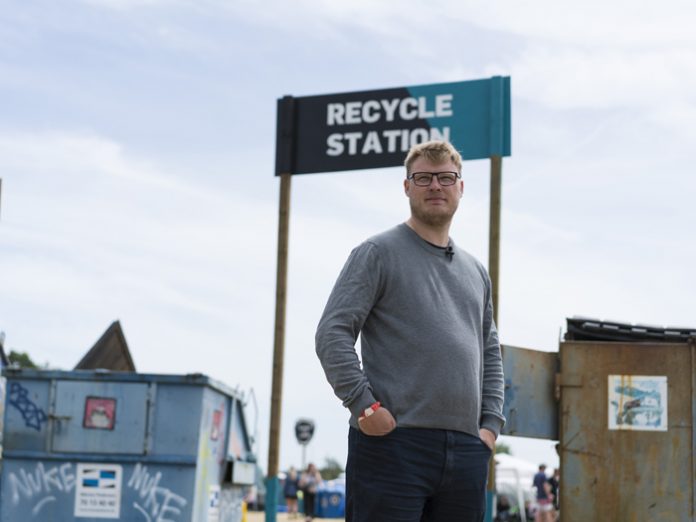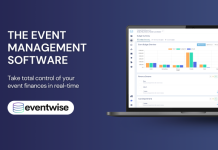As the sustainability manager of Roskilde Festival, Mikkel Sander is trying to prove that 135,000 drunk youngsters can party for eight days without destroying the world. Roskilde Festival has been non-profit since 1972 and donated over 40 million euros to charity throughout the years. A feeling of responsibility towards the surrounding world is very much part of Roskilde Festival’s DNA. Mikkel holds a master’s degree in Sustainable Transition.
The festival industry is full of ambition in terms of creating environmentally friendly events, and that’s great. We need this, considering current global environmental problems. The industry, however, is also full of misconceptions of where our negative environmental impacts are, and full of initiatives that serve as nothing more than great PR. At worst, this will contribute to making environmental issues even bigger.
I prefer to point out my own mishaps, not others’, so let me give you an example on just how foolish we at Roskilde Festival have been in the past.
Some years ago, we looked at the waste left at our campsites and saw an ocean of broken cheap white gazebos, thousands of them. We thought that we could do the environment a great favour by recycling them. We even found a company that could transform the plastic covers into dishwashing brushes. They would even pay for the material! Circular economy at its best, right? So, we sent out 100 volunteers to collect it. At the end of the day they collected less than three tons of plastic covers, because they weigh almost nothing and were hard to separate.
Had we done our homework – which we did the year after – we would have known that only 0.86% of the waste left at our campsite are white plastic covers from gazebos. Actually, there is more canned food than plastic covers left, it’s just not as clearly visible. Another thing we did not see, and therefore did not collect, were thousands of PVC air mattresses (6.5% of waste) that we now know is considered dangerous waste and by Danish law must not be incinerated. Had we used the 100 volunteers to collect air mattresses, as we do today, we would have saved the environment a big negative impact.
My point is that we need to make our choices and organise our priorities by thoroughly analysing what our biggest environmental problems actually are, not what we think they might be or what might make a great PR story. When I go to conferences around Europe, there is much talk about environment-friendly power, energy-saving technologies, green tariffs and biodiesel generators – my biggest respect to the people who drive that agenda. Energy might be the biggest negative environmental impact for some festivals, but not for the ones that look like Roskilde Festival. For Roskilde Festival only 3.8% of our CO2 emissions come from the electricity we use. It would be 10 times more CO2-reducing to cut our amounts of waste by 25% than our power usage by 25%.
It’s often a fine line between wanting to generate attention and actually making a change. I’ve often seen festivals promoting the collection of cigarette butts in small transportable ashtrays and presenting it as an environmental project – and yes, we’ve done that too! The environment doesn’t care if they are collected during the festival, as long as they are collected at some point and not left in nature. The only thing you get from this is more waste in the form of the ashtrays. This is a cleaning issue, not an environmental issue. So, if you, like most festivals, have limited resources for environmental work, use them on better initiatives.
I could continue with examples, but I think you get my point. Before you prioritise your environmental efforts, you need to analyse your festival, and I doubt that you will find cigarette butts even in your top 100 of environmental issues. What are your main emitters of CO2? Which food is consumed at your festival? How do your participants transport themselves? What fractions of waste do you have? Is there any dangerous waste? What are your local conditions when it comes to waste handling, renewable energy and transportation infrastructure? And so on and so on.
If you’re wondering how to get started, there are different free online tools to help you, you can partner up with your local university and get students to do the calculations, you can participate in an environmental certification scheme, and there are also plenty of skilful consultants that can help you with these analyses.
In case you are curious about what accounts for the largest part of Roskilde’s campsite waste, I can tell you that it is foldable camping chairs with 16.3%. We estimate a whopping 200 – 300 tonnes of wasted chairs in total are left across our campsites. Roskilde Festival’s biggest source of CO2 emissions is the food consumed, which accounts for approximately 40% of our total emissions. I bet that if your festival is a bit like ours, your numbers will also be similar.






